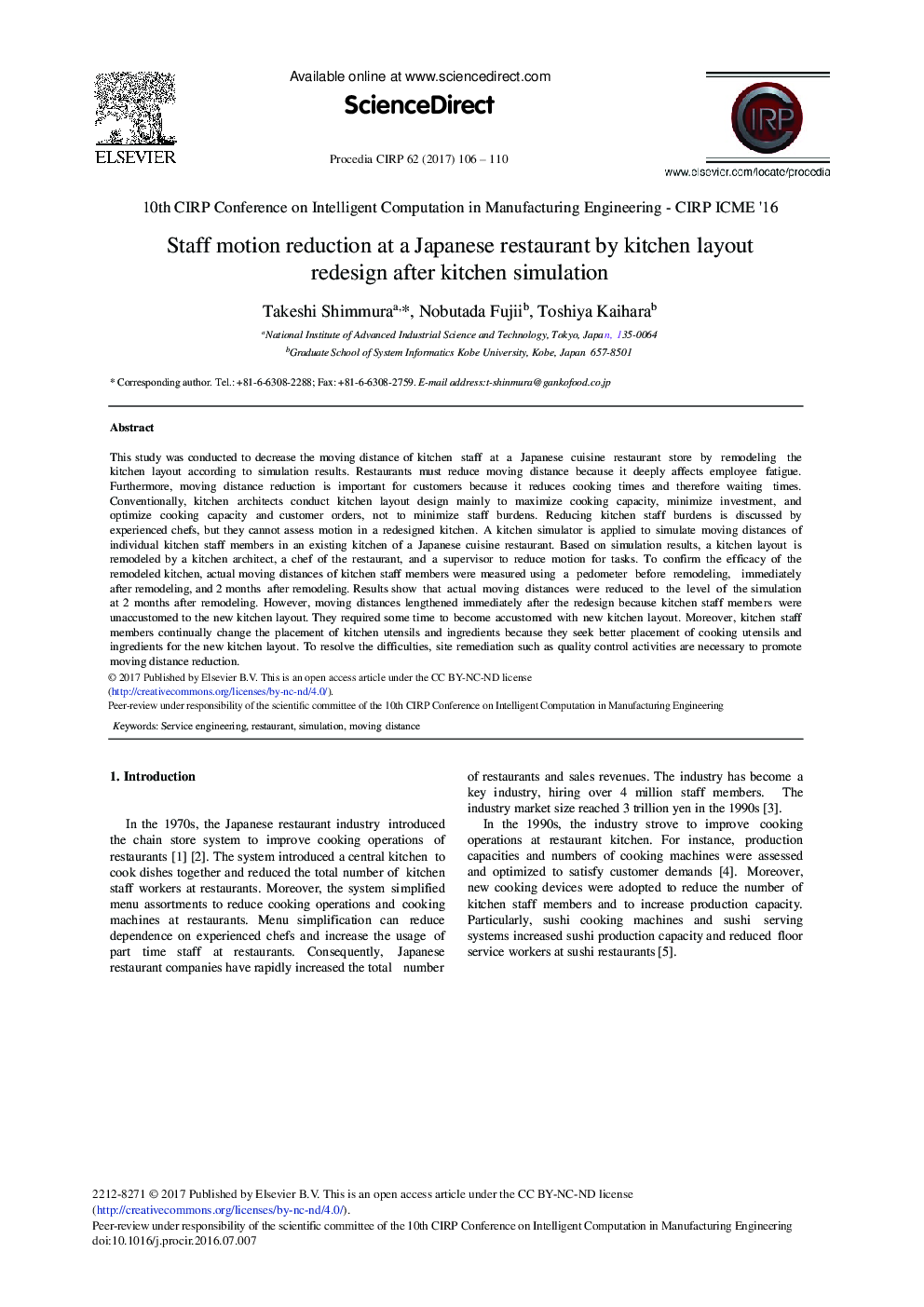| Article ID | Journal | Published Year | Pages | File Type |
|---|---|---|---|---|
| 5470340 | Procedia CIRP | 2017 | 5 Pages |
Abstract
This study was conducted to decrease the moving distance of kitchen staff at a Japanese cuisine restaurant store by remodeling the kitchen layout according to simulation results. Restaurants must reduce moving distance because it deeply affects employee fatigue. Furthermore, moving distance reduction is important for customers because it reduces cooking times and therefore waiting times. Conventionally, kitchen architects conduct kitchen layout design mainly to maximize cooking capacity, minimize investment, and optimize cooking capacity and customer orders, not to minimize staff burdens. Reducing kitchen staff burdens is discussed by experienced chefs, but they cannot assess motion in a redesigned kitchen. A kitchen simulator is applied to simulate moving distances of individual kitchen staff members in an existing kitchen of a Japanese cuisine restaurant. Based on simulation results, a kitchen layout is remodeled by a kitchen architect, a chef of the restaurant, and a supervisor to reduce motion for tasks. To confirm the efficacy of the remodeled kitchen, actual moving distances of kitchen staff members were measured using a pedometer before remodeling, immediately after remodeling, and 2 months after remodeling. Results show that actual moving distances were reduced to the level of the simulation at 2 months after remodeling. However, moving distances lengthened immediately after the redesign because kitchen staff members were unaccustomed to the new kitchen layout. They required some time to become accustomed with new kitchen layout. Moreover, kitchen staff members continually change the placement of kitchen utensils and ingredients because they seek better placement of cooking utensils and ingredients for the new kitchen layout. To resolve the difficulties, site remediation such as quality control activities are necessary to promote moving distance reduction.
Related Topics
Physical Sciences and Engineering
Engineering
Industrial and Manufacturing Engineering
Authors
Takeshi Shimmura, Nobutada Fujii, Toshiya Kaihara,
